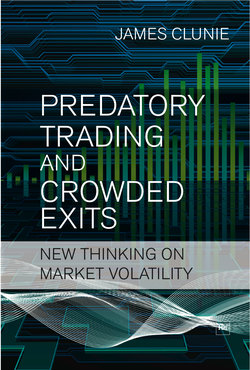Читать книгу Predatory Trading and Crowded Exits - James Clunie - Страница 21
Cross-market trading
ОглавлениеThere is no need to confine our thinking to just one market. We can envisage a market eco-system that includes not only different types of capital instrument, but also derivatives and markets in different countries.
Strategies such as capital-structure arbitrage, for example, involve trading across more than one market in the securities of a single company. It could, for example, involve buying bonds issued by a company but selling equity in that same company. Although designed to exploit arbitrage anomalies between markets, these strategies can be risky. Yu (2006) examined the expected returns and risks from capital structure arbitrage and found that significant losses occur with alarming frequency. Ofek et al. (2004) have examined violations of ‘put-call parity’, a ‘no-arbitrage’ relationship that one expects to hold in options markets. These violations represent a pricing anomaly between equity and option markets and should be arbitraged away soon after they arise, subject to some of the constraints on arbitrage and risks that we have discussed already.
But why should such cross market anomalies arise in the first instance?
One possible explanation is that there is segmentation between the equity and options market – in other words, some players are confined to only one market. For example, a long-only equity investment fund may not be permitted to trade in options. Such constrained players could actually exacerbate pricing anomalies between markets, if forced to trade within a single market segment regardless of price because of, say, client redemptions. Furthermore, they would be unable to correct pricing anomalies between markets through arbitrage.
For traders and risk arbitrageurs, this suggests that cross-market flexibility is important for maximising the opportunity set.
